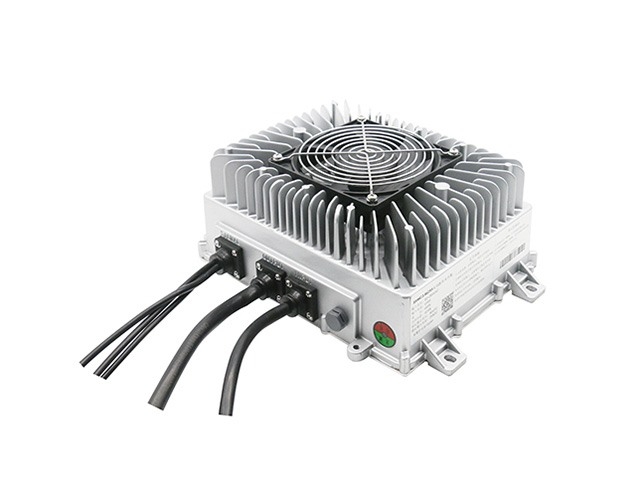- 09
- Nov
NMC lithium battery pack charging and discharging protection circuit
It supplies 3.3V voltage to the circuit system through the lithium battery, and has the function of USB charging and overcharge maintenance.
USB charging selects TP4056 chip circuit to complete. TP4056 is a single-cell lithium-ion battery stable current/stabilized voltage linear charger. The PMOSFET architecture is selected internally and combined with an anti-reverse charging circuit, so no external isolation diode is required. Thermal feedback can actively adjust the charging current to constrain the chip temperature under high-power operation or high ambient temperature conditions. The charging voltage is stable at 4.2V, and the charging current can be set externally through a resistor. When the charging current reaches one-tenth of the set value after reaching the final charging voltage, TP4056 will actively terminate the charging cycle.


When there is no input voltage, TP4056 actively enters a low current state, reducing the battery leakage current to less than 2uA. TP4056 can also be placed in shutdown mode when there is power supply, reducing the supply current to 55uA. The pin definition of TP4056 is shown in the following table.
The USB charging circuit diagram is as follows:
Circuit analysis: Header2 is the connecting terminal, and B+ and B_ are separately connected to the positive and negative poles of the lithium battery. Pin 4 and Pin 8 of TP4056 are connected to the USB power supply voltage of 5V, and Pin 3 is connected to GND to complete the power supply and enablement of the chip. Connect 1 pin TEMP to GND, turn off the battery temperature monitoring function, 2 pin PROG connect resistor R23 and then connect to GND, the charging current can be estimated according to the following formula.
The 5-pin BAT supplies charging current and 4.2V charging voltage to the battery. The indicator lights D4 and D5 are in the pull-up state, indicating that the charging is complete and charging is in progress. It will light up when the connection chip pin is low. Pin 6 STDBY is always in high-impedance state during battery charging. At this moment, D4 is off. When the charging is completed, it is pulled down to low level by the internal switch. At this moment, D4 is on, indicating that the charging is complete. On the contrary, in the battery charging project, the CHRG clock is at low level when pin 7 is on, and D5 is on at this moment, indicating that it is charging. When the charging is completed, it is in a high impedance state, and D5 is off at this moment.
The lithium battery overcharge and overdischarge maintenance circuit selects DW01 chip and cooperates with MOS tube 8205A to complete. DW01 is a lithium battery maintenance circuit chip with high-precision voltage monitoring and time delay circuits. The pin definition of DW01 chip is shown in the table below.
8205A is a common drain N-channel enhanced power FET, suitable for battery maintenance or low-voltage switching circuits. The internal structure of the chip is shown in the figure below.
The lithium battery charging and maintenance circuit is shown in the figure below.
Circuit analysis: Header3 is a toggle switch to control whether lithium battery power is used.
Normal operation of the lithium battery: When the lithium battery is between 2.5V and 4.3V, both pins 1 and 3 of DW01 output high level, and the voltage of pin 2 is 0V. According to the schematic diagram of 8205A, pin 1 and pin 3 of DW01 are separately connected to pin 5 and pin 4 of 8205A. It can be seen that both MOS transistors are in conduction. At this moment, the negative pole of the lithium battery is connected to the power supply ground P_ of the microcontroller circuit, and the lithium battery is normal. powered by.
Overcharge maintenance control: When the lithium battery is charged through the TP4056 circuit, the lithium battery power will increase as the charging time increases. When the voltage of the lithium battery rises to 4.4V, DW01 thinks that the voltage of the lithium battery is already in an overcharge condition, and immediately manipulates pin 3 to output 0V, and the 8205A chip G1 has no voltage, causing the MOS tube to stop. At this moment, the lithium battery B_ is not connected to the circuit power supply P_ of the single-chip microcomputer, that is, the charging circuit of the lithium battery is blocked, and the charging is stopped. Although the overcharge control switch tube is turned off, the direction of its internal diode is the same as that of the discharge circuit, so when a discharge load is connected between P+ and P_, it can still be discharged. When the voltage of the lithium battery is lower than 4.3V, the DW01 stops the overcharge maintenance condition. At this moment, the lithium battery B_ is connected to the power supply P_ of the microcontroller circuit, and the normal charge and discharge are performed again.
Over-discharge maintenance control: When the lithium battery is discharged with an external load, the voltage of the lithium battery will slowly drop. DW01 detects the voltage of the lithium battery through the R26 resistor. When the voltage drops to 2.3V, DW01 thinks that the lithium battery voltage is already in the over-discharge voltage condition, and immediately manipulates pin 1 to output 0V, and the 8205A chip G2 has no voltage causing the MOS tube to stop. At this moment, the lithium battery B_ is not connected to the circuit power supply P_ of the single-chip microcomputer, that is, the discharge circuit of the lithium battery is blocked, and the discharge is stopped. When connected to the TP4056 circuit for charging, after DW01 detects the charging voltage through B_, it controls pin 1 to output a high level. At this moment, the lithium battery B_ is connected to the power supply P_ of the microcontroller circuit, and normal charge and discharge are performed again.
